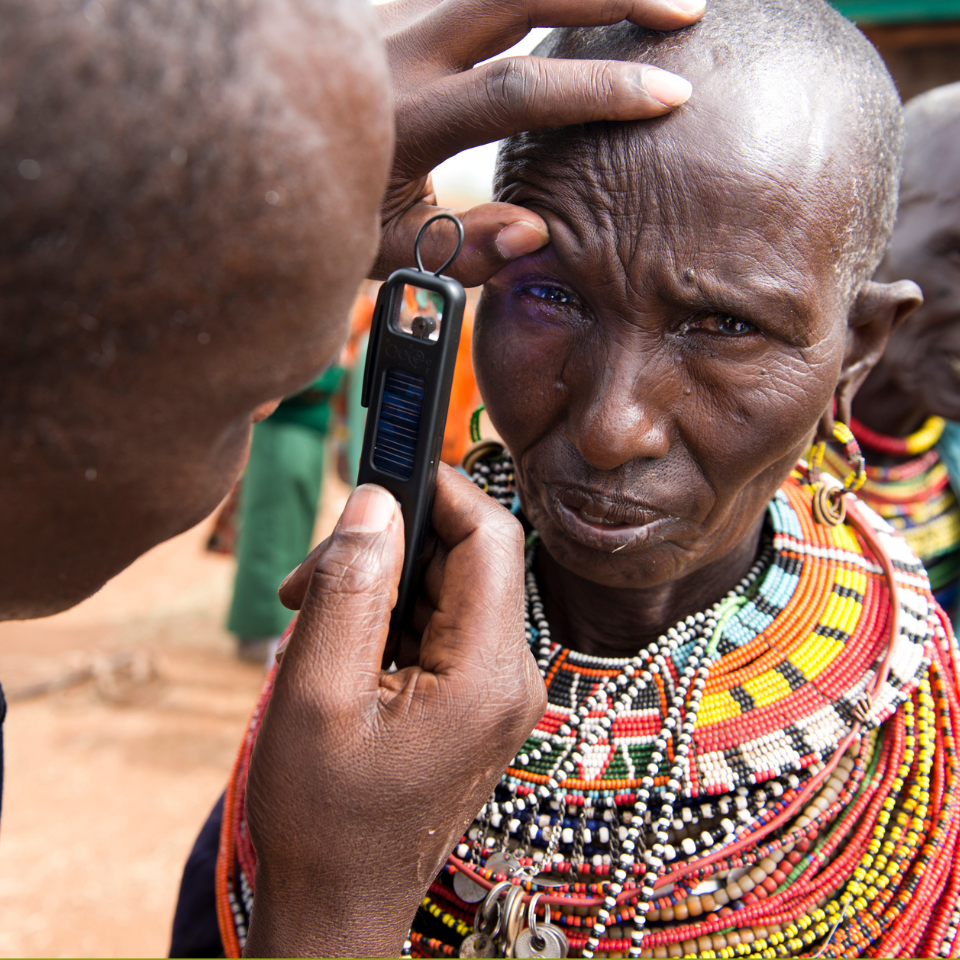Research
All of the research supported through The Fred Hollows Foundation aims to improve our understanding of how to tackle avoidable blindness and realise the right of Indigenous Australians to good health. We seek high impact information and results to address the most pressing issues that keep people needlessly blind today. The information gained through research is used to inform our work with local governments and partners to develop systems that enable us to end avoidable blindness.
PricewaterhouseCoopers: Investing in Vision
One example is research we commissioned with PricewaterhouseCoopers – which uncovered the compelling link between restoring sight and economic development. It found that for every $1 invested in ending avoidable blindness, there was a $4 economic benefit for a country’s economy. By looking at our key goal through an economic lens, it was demonstrated that ending avoidable blindness has benefits reaching far beyond health alone. If more people in a nation can see, more people can go to school, work, raise children or start businesses. Ending avoidable blindness improves the economy, equality, skills, GDP and development of a nation, while reducing its financial and social burden.
Here are some findings from the research:
There are still millions who need our help
- An estimated 36 million people are blind around the world
- A further 191 million are visually impaired
- 90% of people who are blind live in developing countries
It’s not just people who are suffering
- Ending avoidable blindness could inject as much as $517 billion into struggling economies over a decade
- Every year, avoidable blindness costs developing countries around $49 billion in lost economic activity
- Ending avoidable blindness in the developing world can be achieved for as little as $2.20 per person, per year
For every $1 invested in blindness prevention
- Globally: a potential return of $4 in economic gains
- Pakistan: a potential return of $6
- Kenya: a potential return of $3.56
- Yunnan Province (one of the poorest regions in China): a potential return of $3.16
Have a read of our latest research reports and studies:
Investing in Vision
Take a closer look at our PricewaterhouseCoopers report findings. The research delves into the impact of avoidable blindness from an economic standpoint. This document is the world’s first global cost benefit analysis of eliminating avoidable blindness.
The Power of Impact Investment to Improve Vision
This report provides new ideas about how eye health can be financed through impact investing. By bringing a market based approach to eye health, treating avoidable blindness can have financial returns for investors as well as significant and measurable social outcomes.
The Visionary Study
In partnership with the world-class research facility, The George Institute for Global Health, we explored the impact of cataract surgery on patients in Vietnam. The results show that 17% fewer patients experience social and economic hardship after cataract surgery.
Better Vision, Healthy Ageing Project
In 2011, The Foundation recognised the rapid increase of an ageing population in the Asia region. We collaborated with the Burnet Institute (Australia’s largest virology and communicable disease research institute) to discover ways to improve the health and vision of elders in the region. The results of this study brought about establishing the 204 Elders Clubs where elderly people can more easily access eye health advice.
To help someone to see was a tremendous feeling and with medical and technological advances, we have greatly increased the ability of eye doctors to give that help.
Technology
Fred believed the only way to get on with eliminating avoidable blindness was to break down every barrier in his way. One of these barriers was making sure developing countries had access to new technologies. Access was the first step, followed by reducing the cost of getting these tools to the people who needed them most.
We fund our partners to develop technology that is innovative, affordable and, most importantly, helps us reach our goal of ending avoidable blindness sooner. We collaborate with organisations that share our vision, combining skills and working together to achieve this.
Intraocular lenses
In the final years of Fred’s life, he worked tirelessly to open intraocular lens factories in Eritrea and Nepal. These lenses were vital in restoring sight to people undergoing cataract surgery. If made in Australia, they’d cost hundreds of dollars. However, Fred knew that if they were made locally, they’d become significantly more affordable. And he was right.
One year after he passed away, two laboratories were opened in his name: one in Asmara and one in Kathmandu. The lenses cost as little as $5 each and are as vital today as they were in Fred’s time. To date, the laboratories have manufactured over eight million lenses that are used locally and exported to more than 50 countries.
Arclight
The Arclight is an inexpensive, pocket-sized breakthrough: an ophthalmoscope, made for diagnosing eye diseases in the developing world. Invented by William J Williams with the support of The Foundation, it’s tipped to revolutionise eye care in the same way intraocular lenses did when they were first manufactured 20 years ago.
Lightweight, portable and solar powered, the Arclight costs around $10, and is affordable for even the most under resourced health clinics in developing countries. By bringing health workers an affordable, mobile and easily accessible device, many more millions of people will now have the chance to get the back of their eyes comprehensively examined. Early and thorough eye examinations are vital for detecting diseases like cataract, trachoma and diabetic retinopathy before they cause blindness.
